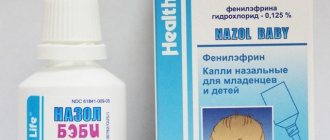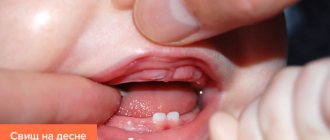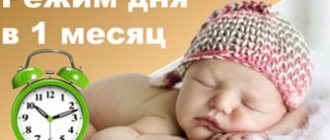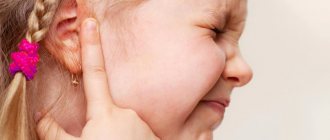- Symptoms of sinusitis
- Causes
- How does sinusitis occur?
- Types of sinusitis
- Treatment
- Treatment with folk remedies
- Prevention
- Tips for parents
Acute respiratory viral diseases, both in adults and children, are often accompanied by inflammation of the nasal mucosa - rhinitis or runny nose. If it is not treated or does not respond to treatment for a long time, a common runny nose develops into a serious disease - sinusitis, when the mucous membranes of the paranasal sinuses (sinuses) are involved in the inflammatory process.
Symptoms
Diagnosing sinusitis is not easy: often the disease is hidden, and the symptoms resemble acute respiratory infections or the common cold.
Parents should be wary that the child has been suffering from rhinitis for a long time and has difficulty breathing through the nose. It is important to monitor your baby: with sinusitis, a child may experience headaches that at such an early age he cannot even explain. The baby will only point to his head or hold it with his hands.
Sometimes the pain is concentrated in a specific area of the head or face. In this case, the child tries to press the sore spot, which may characterize the development of sinusitis. Even a toothache, which a child complains of in such a situation, will be a symptom of an inflammatory process.
With sinusitis, the body temperature may rise, especially if a viral infection or chronic disease, such as otitis media, is associated.
A sick baby suffers from malaise, is apathetic, refuses to eat, and sleeps poorly. The child is weakened, depressed, complains of headaches and cough.
A cough with sinusitis should cause particular concern if it is prolonged, paroxysmal, disrupts sleep, or if the child experiences it painfully. This cough is dry, but may also be accompanied by expectoration of purulent mucus.
Symptoms of sinusitis in children
Nasal congestion is the main manifestation of the disease. It is associated with swelling of the mucous membrane, decreased lumen and closure of the nasal passages. With sinusitis in children, nasal breathing disturbance can be on one or both sides, present constantly or occur periodically8.
In addition to nasal congestion, the child is bothered by discharge from the nasal passages4. The nature of the discharge depends on the causative agent of the disease. They can be mucous, purulent, with or without an odor, and sometimes they are released spontaneously or when blowing the nose. Inflammatory fluid may leak through the nostrils, enter the nasopharynx and cause coughing2,8.
Less persistent symptoms are headache and impaired sense of smell2,4.
The severity of sinusitis in children depends on the severity of its course. In the case of a mild course, the temperature is usually normal or subfebrile, the general condition suffers slightly8. But due to sinusitis, a child may get tired quickly, sleep poorly, and complain of weakness2. Severe forms of sinusitis are characterized by fever above 380C, severe headache, and possible swelling of the eyelids and soft tissues of the face7,8.
If your child develops symptoms of sinusitis, you should contact an ENT doctor.
Up to contents
Causes
The nasal cavity, paranasal sinuses, and nasopharynx work quite harmoniously in their functions. However, with chronic rhinitis, excessive accumulation of mucus and sometimes pus leads to inflammation of the sinuses - sinusitis develops, the cause of which is weakened immunity. A child’s healthy immune system resists the common cold and prevents sinusitis from developing.
Another cause of sinusitis is a chronic or purulent runny nose, especially in combination with viral diseases: acute respiratory viral infections or acute respiratory infections. The release of large amounts of mucus and its accumulation in the sinuses will aggravate the course of the disease. If a child suffers from adenoiditis - inflammation of the pharyngeal tonsil - treatment of sinusitis and recovery from the disease will be more difficult. Therefore, timely and effective treatment of chronic runny nose is the main concern of parents and doctors.
Allergy
can also cause sinusitis. Allergic sinusitis can be hereditary and occurs with the administration of antibiotics, vaccination or blood transfusion.
How does sinusitis occur?
All paranasal sinuses communicate with the nose and are constantly ventilated. They are lined with a thin mucous membrane, the thickness of which in a healthy state resembles tissue paper.
With inflammation, swelling occurs, the mucous membrane swells and thickens tenfold. The openings for ventilation are blocked, the outflow of the resulting mucus becomes difficult or stops completely.
Pathogenic microorganisms enter such an environment and sinusitis develops. Complicated sinusitis is usually a viral, bacterial or fungal infection. Bacterial flora is difficult to combat because due to the numerous use of antibiotics, it has become resistant to most of them. The same applies to fungal infections.
Polymicrobial or mixed sinusitis may occur. The cause of inflammation of the sinuses is disease of the nasopharynx and the spread of infection through lymph or blood (lymphogenous or hematogenous route).
The occurrence of sinusitis can be caused by a deviated nasal septum, changes in the structure of the nasal sinuses, or inhalation of cold air or chemically active substances.
Types of sinusitis
Sinusitis can be acute and chronic, catarrhal and purulent.
The types of sinusitis are determined by where they occur. The sinuses are located in pairs around the nose. Since the sinuses grow with the growth of the child, their sizes in children 1 year and 12 years old differ significantly. Inflammation occurs in the sinuses on one side and in one sinus. However, in practice, several sinuses are affected in a sick child.
The largest of them are the maxillary ones. Above they border with the eye sockets, and below with the teeth of the upper jaw. Inflammation of these sinuses is called sinusitis. It can develop in children from 1 to 2 years of age, since it is at this age that the maxillary cavities are already formed.
With maxillary sinusitis, children are bothered by heaviness and pain in the cheeks, which intensifies when the head is tilted. If one of the paired sinuses is affected, pain is felt only on one side of the cheek.
The second most common disease is ethmoiditis. This is an inflammation that develops in the ethmoid labyrinth. There are several communicating small cells located here. They are located on both sides of the nose near the inner corner of the eye.
Often such inflammation occurs simultaneously with sinusitis or frontal sinusitis. The child complains of pain in the head and is bothered by a pressing pain in the area of the bridge of the nose. In this case, redness of the conjunctiva and swelling of the eyelids may appear. Inflammation can also affect the eye socket.
Elevated temperature is accompanied by a decreased sense of smell, serous discharge that turns purulent, and neurological pain.
Inflammation of the frontal sinuses - frontal sinusitis - can develop in children over 6 years of age. It is by this age that two sinuses form in the thickness of the frontal bone. Their boundaries pass between the anterior cranial fossa and the upper wall of the orbit.
The course of sinusitis is noticeably more severe than other sinusitis. It is always combined with sinusitis and ethmoiditis and is accompanied by high fever, severe headaches, especially in the morning, difficulty breathing through the nose and pain in the eyes.
Infection in the sphenoid sinuses, located at the base of the skull in the sphenoid bone, causes sphenoiditis. The disease is diagnosed in children over 10 years of age. The disease rarely occurs on its own, almost always in combination with ethmoiditis. Sphenoiditis can cause visual impairment, nervous system damage, and damage to the membranes of the brain.
Sinusitis (sinusitis, sinusitis, polysinusitis, ethmoiditis):
This is the name for acute or chronic diseases of the paranasal sinuses. The diagnosis depends on which sinus the inflammation occurs in, namely: ethmoiditis - inflammation of the sinuses of the ethmoid bone; frontal sinusitis - inflammation of the frontal sinuses; sphenoiditis – inflammation of the sphenoid sinuses; sinusitis - inflammation of the maxillary (maxillary) sinus; polysinusitis is inflammation of all nasal sinuses simultaneously. Among the main symptoms defining sinusitis are:
- headache that gets worse in the morning
- discharge of mucus or pus from the nose
- toothache
- pain in the upper jaw area
- with sinusitis, pain occurs when pressing on the cheeks
- with ethmoiditis, swelling and swelling of the eyelids, soft tissues around the eyes and pain between the eyes are noticeable. Hypersensitivity of the wings of the nose occurs even to minor touches, nasal congestion and partial deterioration of the sense of smell appear
- frontal sinusitis manifests itself as severe headaches localized in the forehead and a feeling of heaviness in the affected sinus area
- sphenoiditis is the rarest type of sinusitis, the manifestations of which are ear pain, as well as pain in the upper part of the head and neck
Sinusitis can be complicated by inflammation of the throat, and in especially severe cases, brain infections.
Treatment
Therapeutic measures are carried out by pediatric otolaryngologists after diagnosis and laboratory tests. Sinusitis is characterized by an increased content of leukocytes in the blood and ESR. Based on the results of a blood test, the doctor will determine whether the disease is viral or bacterial in nature.
If bacterial sinusitis is diagnosed, the use of antibiotics is necessary. The dosage of drugs and the duration of treatment are determined by the attending physician.
To combat symptoms, vasoconstrictor drugs are prescribed: drops, sprays. They can be used 3-4 times a day for no more than 5 days, according to the instructions.
Among the most effective drugs for treating the symptoms of sinusitis are Sialor based on silver ions. It has an anti-inflammatory effect and prevents the proliferation of bacteria. Thanks to the mild action of the drug, the balance of microflora is maintained and favorable conditions are created for the regeneration of the nasal mucosa.
To improve nasal breathing and reduce swelling, antihistamines are used for 7-10 days.
Antipyretics are used when the temperature rises above 38 degrees.
To cleanse the nasal cavity, you need to rinse your nose several times a day with a solution of sea salt or special preparations based on sea water. If inhalations with decoctions of medicinal herbs are indicated, you can use calendula, sage, chamomile, and eucalyptus. To increase the effect of this procedure, you must first rinse your nose.
Physiotherapy gives good results.
In advanced cases or in the absence of results from conservative treatment, surgery is prescribed to free the sinuses from purulent contents. Modern medical instruments make the so-called “puncture” as painless as possible.
How and with what to treat sinusitis in a child?
In case of sinusitis, it is important to remove inflammatory fluid from the sinuses and restore the patency of their anastomoses to ensure free flow of mucus5,8. “Releasing” the sinuses is only part of the therapy. Treatment should be comprehensive, aimed at fighting infection and restoring mucosal function2.
For this purpose, the doctor may prescribe:
- antibiotics2,8;
- antiviral drugs8;
- mucolytics (thinning mucus)8;
- glucocorticoids (nasal medications)2,8;
- antiallergic drugs2,8;
- decongestants2,8.
An important component of the treatment of sinusitis in children can be decongestants8 - vasoconstrictor drugs that help eliminate congestion and swelling of the mucous membrane, reduce the secretion of nasal mucus and facilitate nasal breathing5,8. At the same time, it is extremely important to use drugs intended for children and no longer than 5-7 days8.
Up to contents
TIZIN® in the treatment of sinusitis in children
The TIZIN® line includes drugs that can be used in children.
TIZIN® Classic
The nasal spray contains xylometazoline hydrochloride, which has a vasoconstrictor effect. 2 minutes after spraying onto the mucous membrane, TIZIN® reduces its swelling, helps cleanse the nasal cavity and sinuses of secretions, facilitating nasal breathing9. The action aimed at combating nasal congestion lasts up to 8 hours10.
For children from 2 to 6 years old, a 0.05% solution of TIZIN ® Classic is suitable, and for children over 6 years old - a 0.1% solution.9
TIZIN® Expert
The nasal spray, in addition to the vasoconstrictor component, contains hyaluronic acid12, which maintains the mucous membrane in a hydrated state and creates optimal conditions for its restoration11. The drug can begin to work within 2 minutes11.
TIZIN® Expert in the concentration of xylometazoline 0.05% is suitable for children from 2 to 6 years old, 0.1% for children over 6 years old and adults11.
TIZIN® Alergy
This nasal spray can be used if sinusitis develops as a result of allergic rhinitis and only in a child over 6 years of age13. An antihistamine drug, levocabastine, helps fight allergy symptoms: nasal discharge, nasal itching, and sneezing. The effect of the drug begins to develop after 5 minutes and can last up to 12 hours13.
Up to contents
Treatment with folk remedies
In the case of sinusitis, folk or home remedies should be part of complex therapy and not independent treatment.
Folk remedies should be used with extreme caution and only with the permission of an otolaryngologist. For example, this could be rinsing the nose with a decoction of chamomile. If you are not allergic to chamomile, it is advisable to prepare a decoction with half a teaspoon of salt.
If the child’s general condition is unimpaired and the duration of the disease is short, nasal rinsing with salt solutions and hot foot baths can be prescribed.









